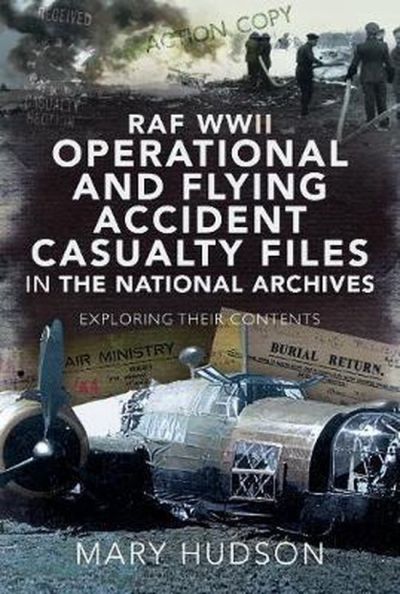| Title: | RAF WWII Operational and Flying Accident Casualty Files in the National Archives |
| Writer: | Hudson, M. |
| Published: | Pen & Sword |
| Published in: | 2020 |
| Pages: | 328 |
| Language: | English |
| ISBN: | 9781526783523 |
| Description: | In 2013 the British Ministry of Defence began releasing the RAF Second World War Operational and Flying Accident Casualty Files to the National Archives where they became available to the public. Many researchers and family members of RAF casualties had looked forward to this moment as these files contain a wealth of information and documentation on aircraft crashed and individual casualties. The contains of the files differ from file to file. Some of the documents found on the files need explanation to understand the information they hold. Mary Hudson has now written a book which can be used as a guide to the understanding of the records. Mary Hudson served with the WRAF and the RAF from 1983. Whilst with the RAF she gained an MA in War Studies from King’s College, London. She then worked at the Ministry of Defence Air Historical Branch for 14 years. Here she investigated casualty identification cases and dealt with casualty enquiries from the public, using the RAF casualty files on a daily basis. She can therefore be regarded as an expert on these casualty files. The casualty files contain a wealth of information, but some of the RAF documents included in the files are full of abbreviations, acronyms, references and classifications. Documents were created with standard formats. This can make it difficult - or sometimes even quite impossible - for the uninitiated to understand. Mary Hudson has tried to make the meaning clear with examples, explanations and translations. The combination of explanation in text and images of examples of the relevant documents makes it very easy to recognize and understand. It also enables people to compare them with the documents found on the casualty file they are researching. Besides explaining the various types of documents the book also explains the work of e.g. the RAF Missing Research & Enquiry Service and many other organisations and several policies with regard to casualty handling. Together with the appendixes the book facilitates a journey through not only the files, but also the way the RAF Casualty Branch was organized and how it worked. Mary Hudson has used her expert knowledge to compose a guide for use by researchers and family members of RAF casualties. The books helps to understand when and how these files were created, where the information came from and how to define the information in the records. It is an indispensable guide for people who are researching an RAF casualty file for the first time, but even for the more experienced researchers (I had studied more than 100 files myself before reading the book) the book can be extremely helpful whilst researching an RAF casualty file or to understand the work of the RAF Casualty Branch. |
| Rating: |     Very good Very good |
Information
- Article by:
- Pieter Schlebaum
- Published on:
- 20-04-2021
- Feedback?
- Send it!




